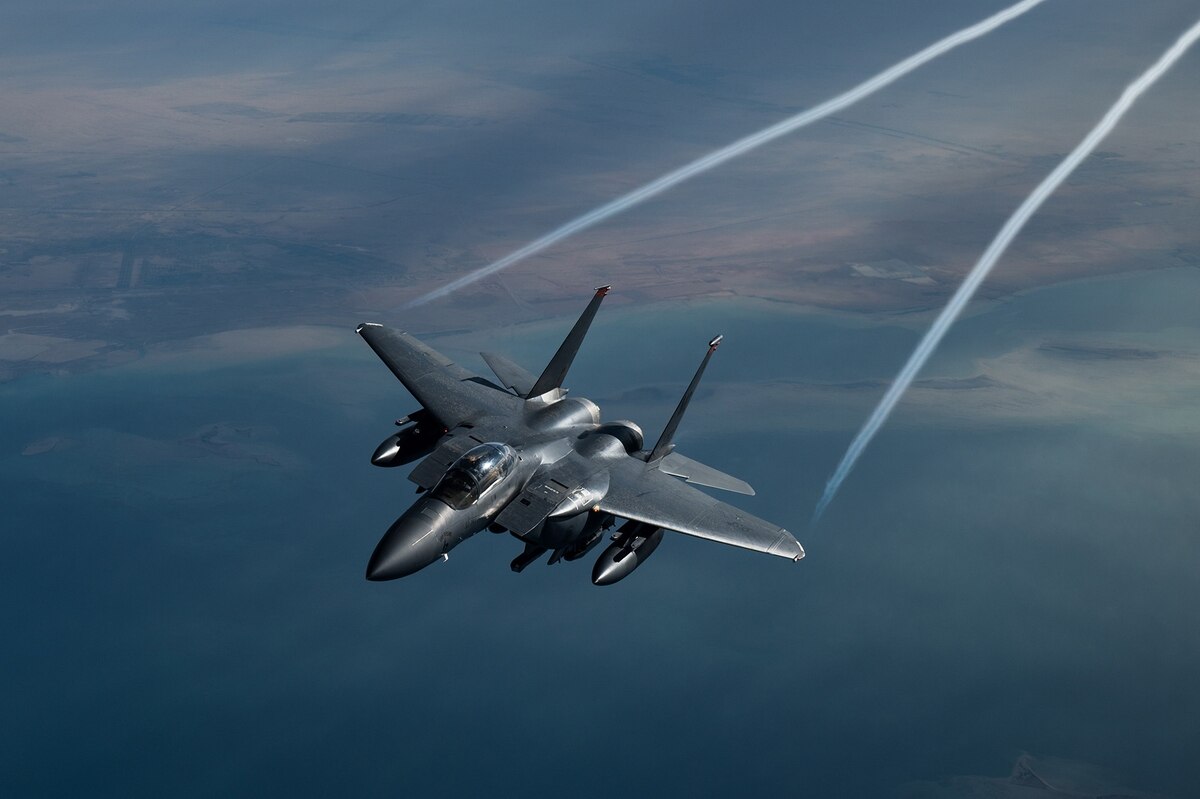(Source : Air Force Magazine – By Amy McCullough) – Air Force, Space Force Release Department’s First-Ever Arctic Strategy
The Department of the Air Force unveiled its first-ever Arctic Strategy on July 21, with Secretary Barbara M. Barrett citing the Arctic’s increasing strategic importance as Russia builds up its military presence in the area, China looks to normalize its presence there, and melting ice caps open up sea lanes to more traffic, creating the potential for increased rescue operations.
The U.S. Air Force and Space Force maintain 79 percent of U.S. military assets and forces in the Arctic, including two large bases in Alaska, which combined will soon host more fifth-generation combat power than any other place on Earth, as well as a string of radar and early warning sites throughout Alaska, Canada, and Greenland.
“The Department of the Air Force[‘s] contributions to U.S. national security in the Arctic are large, but relatively unknown,” states the strategy. “Given the Arctic’s vast distances and challenges to surface operations, air and space capabilities have long been essential to gain rapid access and provide all-domain awareness, early warning, satellite command and control, and effective deterrence. Offering a solid foundation on which to build and project power across the region, the Department of the Air Force is the most active and invested U.S. military department in the Arctic.”
The strategy outlines four main lines of effort:
Vigilance
Power Projection
Cooperation
Preparation (…)
Barrett stressed the importance of maintaining a free and open air domain. Alaskan bases are a key launching point to critical areas in both the U.S. Indo-Pacific Command and U.S. European Command theaters of operation. Joint Base Elmendorf-Richardson, Alaska, hosts F-22 Raptors, E-3 Sentry Airborne Warning and Control System aircraft, C-130s, C-12s, HC-130s, and HH-60Gs, as well as the Alaskan Rescue Coordination Center. Nearby Eielson Air Force Base is in the process of bedding down the first F-35 squadrons in Pacific Air Forces, and it also hosts F-16 aggressors, Air National Guard KC-135s, and the Arctic Survival School, which teaches anyone who’s interested how to survive in the Arctic’s harsh environment.
“If you take the globe and you spin it up on end, it really provides you a unique power projection location where you can reach places into Europe, to all of North Asia, and then of course into the Eastern Asia area, so I think that’s of course very, very critical,” Col. Shawn E. Anger, commander of the 354th Fighter Wing at Eielson, told Air Force Magazine. “You could draw an eight-hour aircraft flight mark from our installation, and you can reach some of our most strategic locations, places that the National Defense Strategy calls out specifically as Great Power Competition.” (…)
Read Full Article >>> https://www.airforcemag.com/air-force-space-force-release-departments-first-ever-arctic-strategy/
Illustration © National Geospatial-Intelligence Agency, as published in ibid












